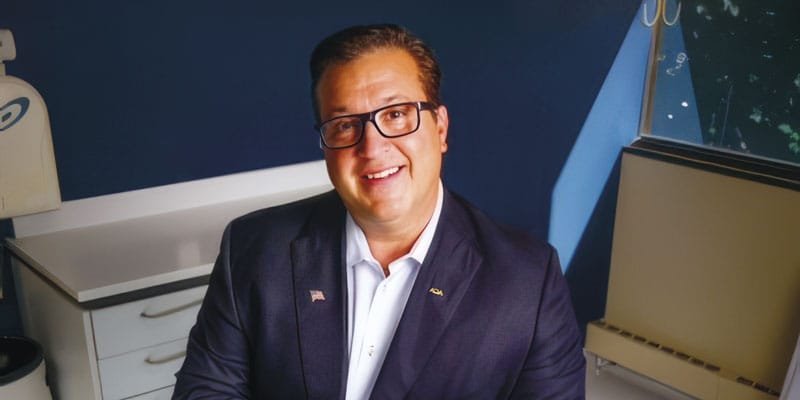Dr. Richard J. Rosato talks about how having the latest dental technology allows him to do more with less and more for patients with clinical and financial challenges.

From a very early age, I was taught to do my best to help others in any way I could. Sometimes it means doing more for those who have less.
During my surgical residency in Chicago, I was frequently faced with this concept. Working in one of the busiest emergency departments in that city, my teammates and I treated emergencies of complex cases without cone beam scanners, reliable electronic medical records, or even digital X-rays. Today, these and countless other innovations in dentistry make it possible for dentists to provide comprehensive and sustainable care to a diverse patient base. Decades ago, we could not recognize the signs of oral cancer as readily as we can today — we intervened in such cases much later than the ideal timing required. That meant more resections and reconstruction, leaving long-term scars but no promise that the cancer would not return.
Today, my team and I are able to utilize the latest in dental technology to serve patients in three very different areas of my home state of New Hampshire. Whether it is the rural southwestern area of Peterborourgh, the state’s fourth-largest city of Concord, or the remote Upper Connecticut River Valley (adjacent to the state’s largest hospital), we provide care for patients representing every social and economic demographic. In a profession where there is heavy influence and marketing in every media, patients are often given confusing information about dental care. Implants, for example, are seen in the public as the most esthetically-pleasing solution, but cone beam and soft-tissue scanning may reveal that implants are not a medical or ideal option. However, our technology and patient relationships help us build treatment plans focused on patients’ long-term economic and medical needs.
Perhaps the biggest challenge to a constantly-evolving dental profession is the dental benefits provider. Labeled commonly as “dental insurance,” such programs are not the same as medical insurance — rather, they are simply limited funds to reimburse patients and dentists for dental procedures. Unfortunately, the disconnect between dental benefit companies and dentists often creates issues regarding treatment and confusion for patients. As an oral surgeon, this fact is particularly evident, when a scan reveals that a patient’s condition requires immediate course correction. In many cases, a lengthy preauthorization is required for reimbursement. Furthermore, as states like New Hampshire build their adult and children’s dental Medicaid programs, third-parties managing these benefits often lag far behind advancements, creating more disconnects.
Dentistry is a constant process of calibration, clinically and in business. Technology has made it easier to do more with less and more for those with less. However, as dentistry expands beyond the clinical setting to include widespread marketing and dental benefits, calibration is a more complex process. Nevertheless, dentists are not the types to shy away from a challenge, particularly when it concerns patient care.
Dr. Douglas Wright talks about how having the latest dental technology helps him to care for “middle market” patients. Read “Implant options for all,” here: https://implantpracticeus.com/implant-options-for-all/
Stay Relevant With Implant Practice US
Join our email list for CE courses and webinars, articles and mores



